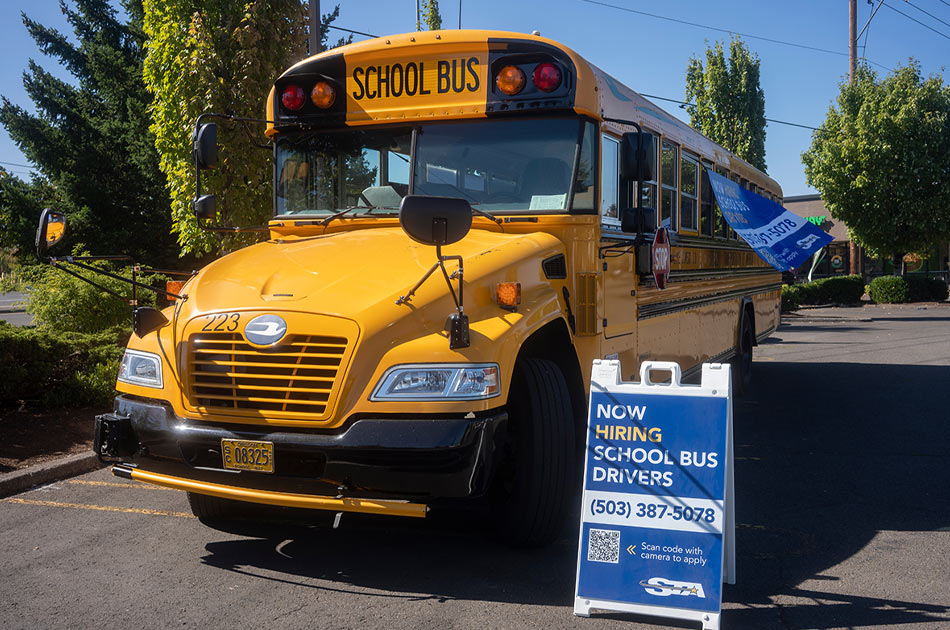The increasing bus driver shortage significantly impacts many school districts across the nation, particularly affecting the transportation logistics for students attending sporting events, practices and games. This situation has introduced a series of disruptions, not only in the operation of school sports programs but also in the broader school community. Students, parents, and school administrators are feeling the strain of this challenge, which extends beyond inconvenience.
Traditionally, bus transportation has been the backbone of student mobility for extracurricular activities, including sports. School districts have long depended on a reliable fleet of buses and drivers to ensure students participate in these essential activities. However, the dwindling number of available drivers is pushing schools towards a critical juncture. Administrators are now tasked with finding innovative solutions to counteract this decline. The situation necessitates a reconsideration of long-standing transportation strategies, potentially leading to a universal shift in how schools manage student transit for sports and other activities.
The implications of this shortage are far-reaching. Students’ access to sports programs, which play a crucial role in their physical and social development, is at risk. The absence of reliable transportation could lead to reduced participation in sports, impacting students’ overall school experience. For parents, this situation means grappling with additional responsibilities to arrange transportation, often juggling their schedules to accommodate their children’s sporting commitments. Administrators face the dual challenge of ensuring student participation in sports while also managing the logistics and budget constraints posed by the driver shortage.
In response to these challenges, school districts must explore a range of innovative and practical solutions. These may include diversifying transportation options, engaging community resources, and reassessing the allocation of resources. The solution calls for a collaborative approach, involving not just the schools, but also parents, local authorities, and transportation agencies. By working together, they can develop sustainable strategies to overcome the hurdles posed by the bus driver shortage, ensuring that students continue to reap the benefits of participating in school sports programs.
Creating Driver Solutions, Community Involvement
Addressing the acute shortage of bus drivers in school districts requires innovative and multifaceted strategies. One promising approach is to enhance the appeal of the bus driver role through more attractive employment packages. This can include offering competitive salaries, flexible work schedules, and additional benefits such as health insurance, retirement plans, or even bonuses for consistent performance and reliability. Such improvements not only incentivize new applicants but also help retain current drivers, creating a more stable and committed workforce.
In parallel, schools can explore partnerships with local transportation companies. These collaborations could range from contracting established services to supplement school buses during peak times to innovative cost-sharing arrangements for using company fleets. Such partnerships provide a practical solution, leveraging the expertise and resources of professional transportation companies to meet student transportation needs reliably.
The involvement of parents and local community members in volunteer driver programs also presents a community-centric solution. These programs can significantly enhance the flexibility and robustness of the school’s transportation system. By tapping into the community’s willingness to provide support, schools can develop a network of volunteer drivers, creating a more personalized and caring approach to student transport. This initiative not only eases the pressure on the existing transportation infrastructure but also fosters a stronger sense of community involvement and support for school sports programs.
Instituting such a program would require careful planning and coordination. Implementing comprehensive safety measures, including background checks, vehicle safety inspections, and driver training programs, is crucial to ensure the safety and well-being of the students. Additionally, clear communication channels must be established between schools, volunteers, and parents to coordinate schedules, routes, and any emergencies or changes.
Ultimately, these approaches, from enhancing employment packages for bus drivers to forging community partnerships, address the driver shortage crisis on multiple fronts. By doing so, they not only resolve immediate logistical challenges but also build a more resilient, connected, and supportive school community. This multifaceted strategy could serve as a model for other districts facing similar challenges, demonstrating how adversity can be transformed into an opportunity for community building and innovative problem-solving.
Embracing Driver Technology, Alternative Transport Modes
Innovative technology solutions, such as ride-sharing apps and coordinated carpool systems, offer promising alternatives to conventional school bus transportation. These digital platforms can significantly streamline the process of arranging travel for students, particularly for extracurricular activities like sports. Ride-sharing apps enable parents and schools to organize safe and efficient travel arrangements, ensuring consistent and reliable transportation for students. This approach not only guarantees that students can participate in sports events but also provides a flexible solution that can be adapted to varying schedules and locations.
Coordinated carpool systems further augment this flexibility. By using digital tools to facilitate carpooling among parents, schools can effectively organize group travel for students. This not only helps in reducing the number of vehicles required but also promotes a sense of community as parents and guardians collaborate in supporting their children’s activities. Moreover, such systems can incorporate safety features like real-time location tracking and parent verification, ensuring the safety and security of the students during transit.
Additionally, alternative transportation modes like contracted shuttle services or public transit can provide temporary but effective relief during acute driver shortages. Contracting with local shuttle services allows schools to access a ready fleet of vehicles, capable of accommodating varying group sizes and travel distances. This option can be particularly effective for longer trips or when multiple sports events are scheduled simultaneously.
Public transit options, where available, can also be integrated into the school’s transportation strategy. Providing students with passes or subsidized fares for public buses or trains can be a cost-effective method, especially for older students. This approach not only alleviates the strain on school transportation resources but also encourages independence and self-reliance among students.
These technology-driven and alternative transportation methods collectively present a versatile and adaptable solution to the challenges posed by driver shortages. By embracing these innovative approaches, schools can ensure that the enriching experiences of school sports remain accessible to all students, fostering their physical, social, and emotional development.










